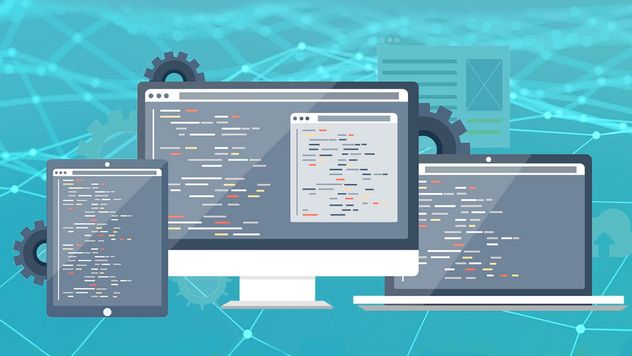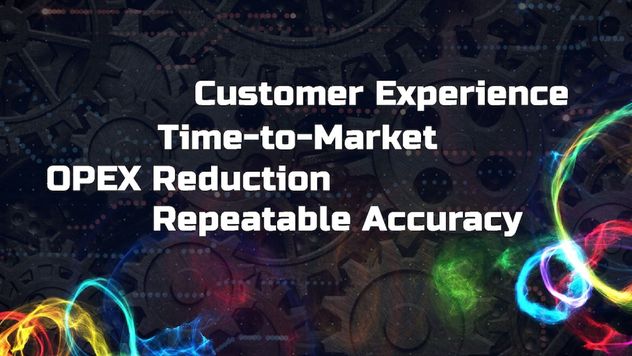
Jump To Section
Being digitally native presents young companies with a predominant advantage over large corporations:
Being able to quickly implement, scale and steer innovative technologies to
- maximize profitability through experience, and
- minimize the time to market.
With the advent of intelligent technologies, many startups have managed to leverage their overall growth through personalization strategies.
This raises an alarming concern for large corporations:
Will they ever be able to match up with digitally native companies in terms of speed of customer experience adaption and enhancement?
To answer this question, we need to dive into how Hyper-Personalization strategies for customer experience can be achieved for large-scale organizations.
Evolution of Hyper-Personalization
The era of Industry 1.0 was all about mass production.
Only quality and quantity mattered. Customer experience was the last priority when it came to budgeting activities.
Then, things started to change: customers wanted differentiation and value addition on top of what they were paying for the product. This gave birth to branding.
Brands started to market the value addition of their products and created unique propositions to attract customers. Factories started mass customization of products to facilitate various brands from the same assembly line. Some of the innovative companies started to invest heavily in categorizing customers based on their needs. This segmentation approach enabled the brands to customize products as desired by that customer segment.
But this wasn’t enough.
There were still several untapped customers whose needs were not being fulfilled through basic consumer categorization.
In turn, micro-segmentation was born, which let companies tap into more variables related to consumer preferences, buying behavior and interests.
With advancements towards the digital era, this approach saw further changes, to the extent that now, customers expect brands to know them at their very first interaction owing to the variables used for hyper-segmentation.
Today, most customers prefer to purchase from brands that personalize customer experiences at scale, like offering hyper-personalized mobile experiences. And, more often than not, they will respond to the brand’s marketing messages only if they feel those messages are crafted to their needs.
Personalization Vs Hyper-Personalization
Hyper-Personalization is personalization on steroids.
In customer experience strategy, ‘personalization’ itself is technically based on contextual data that is used to tailor the experience as per the customer’s need through trend analysis of that particular customer (or the segment to which the customer belongs).
On the other hand, hyper-personalization factors in real-time customer data, weighs fresh insights with historical data, and then tailors the experience as per customer preference — and that too in real-time.
In essence, hyper-personalization is personalization powered with artificial intelligence to analyze, predict, and service the customer in real-time.
Implementing Hyper-Personalization in Your Customer Experience Strategy
As simple as the idea sounds of offering the right experience to the right customer and adjusting according to the next predicted customer action, its actual implementation requires an entire ecosystem modernization.

On the whole, the implementation of such a hyper-personalized customer experience strategy may seem like an impossible task, but adequate strategic evaluation of the transformation and prioritizing right will help achieve maximum value as you go about the complete overhaul.
1. Evaluate existing digital ecosystem
Large-scale companies that have processes and systems working successfully for many years are least likely to swiftly energize the effort towards hyper-personalization.
The biggest challenge is replacing legacy platforms to cloud-based ecosystems. Without the free flow of data in a scalable ecosystem, real-time customer insights cannot be fully utilized.
However, from a strategic viewpoint, the long-term benefits of customer engagement (topline revenues, reduced churn, and low cost of superior customer servicing) outweigh the costs involved in the short-term.
Just by experimenting with some hyper-personalized customer experience journeys, many organizations start to realize the need for advanced intelligent customer systems.
Key Actions:
- Instead of considering the short-term business case for hyper-personalization in the customer experience strategy, evaluate the benefits for 3+ years.
- Evaluate the existing customer experience journey across multiple channels against the value garnered through intelligent automated servicing, personalized cross-selling, and marketing.
2. Centralized customer profiling
Companies with a diversified portfolio of products face challenges in sharing customer insights at scale.
Such siloed insights are only useful for a particular product, leading to a nightmare for businesses that miss out on the cross-sell opportunities and customer servicing without a centralized customer system. An omnichannel customer experience strategy will just cover the needs of the customer experience journey and fail to predict the next action the customer is going to perform.
Complete customer profiling can be achieved through both quantitative data (big data mining) and qualitative data (customer research) and can be combined to form powerful insights for your customer experience strategy.
Customer interaction for research has to become a governed process that helps in capturing the emotional elements associated with a product and the brand. Through such a centralized customer profiling system, all channels can benefit from any of the products that the company can has to offer. This system can then be designed to make adjustments in customer profiles automatically through new data.
Key Actions:
- Quantitative customer data alone is not enough. A combination with qualitative customer data will help develop the most impactful customer profile.
- Operations of such a centralized customer profiling system can become a costly nightmare. Design it to intelligently and automatically adjust profiles based on new events.
3. Using AI to Power Up the Customer Personalization Strategy
Personalization strategies get the companies to a point where they are able to offer the experience based on contextual data.
With advancements in artificial intelligence, companies can now capture real-time customer behavior, mix it with the captured emotional state of the customer, and adapt to a serving, selling or retaining mode.
There are many customer and channel-related use cases that the brand can use to maximize value by providing the desired customer experience and changing the experience focus in real-time:
a) Customer action prediction: Gives the ability to assess the next action the customer is going to perform and display the right message on any particular channel.
b) Channel attention prediction: Predicts the customer touchpoint traffic and process glitches, and automatically triggers a suitable response.
c) Natural Language Processing: Enables real-time interaction analysis to extract the most relevant insights from any live interaction. Its use can range from gauging the emotional state of the customer through speech analytics to evaluating the propensity to churn through keyword extraction.
d) Interaction Assist: Enables the company’s human resources to assist in creating a personalized and pleasant interaction in real-time.
Keeping the customer interaction humanized and personalized with the backing of AI is itself an evolving process where interconnected systems like CRM, product catalog, complaint management system, order tracking and others work in harmony.
Key Action:
- Initiate the implementation of your CX strategy by enabling AI to assist human resources by converting ambiguous data into useful insights during the customer interaction. Making this a part of the customer experience strategy will set the pace for the overall transformation.
4. Connected design systems
When large-scale organizations aggressively adapt digital strategies, the design processes and repositories usually lie in silos across multiple divisions of the company.
This creates an inherent challenge in reusability of design systems.
Not only should these design systems be interconnected, but a free flow of information regarding design principles, libraries, practices and guidelines should be integrated at a cultural level across the organization.
To attain maximum benefits from the customer experience strategy, the system should be sufficiently agile to quickly adapt to changing customer needs for both new and existing products.
Key Actions:
- Strongly bind design systems to maintain experience harmony across the product portfolio.
- Structured flow of design information across the departments should be made a cultural value of the organization.
5. Hyper-personalized content strategy
Scattered product catalogs and content management systems are one of the biggest challenges of large-scale organizations, especially if the company offers a diversity in products.
A centralized product and content catalog becomes the one and only true source of all product-related information to offer a personalized experience in terms of pricing, hyper-personalised omnichannnel customer messaging, tailored content generation, and personalized promotions.
This system is then actively utilized across all customer touchpoints and with predictive AI, it provides the opportunity to offer the right product at the right time to the right customer to maximize the chances of conversion.
The importance of making this a part of the customer experience strategy is further realized by observing customer behaviours:
Every 3 in 4 customers will get frustrated if they are shown products that are not relevant to them, and most expect the brands to only recommend products that are relevant to them.
Key Action:
- Personalized product recommendation with the right key message across multiple channels is by far the most attractive experience for customers. Therefore, it should be made an integral part of the customer experience strategy.
6. Automate at scale
As the AI ecosystem grows with more tools, it will consume more resources.
Automation and simplicity of both quantitative and qualitative data collection should be made part of the transformation strategy. The ecosystem should be robust enough to self-correct itself by absorbing data from both internal and external sources.
Additionally, automation can also be utilized for activities like content generation, product personalization and customer servicing that constitute an integral part of the overall customer experience strategy.
Key Action:
- Make automation part of the AI transformation strategy.
Takeaway
From a strategic viewpoint, a hyper personalized customer experience strategy may seem like a complete overhaul of the existing ecosystem.
In reality, organizations start by creating analytics-driven customer experience to maximize personalization opportunities.
Once the practice of data-driven personalization is established, they start introducing bits of AI into facilitating the brand’s human resources towards preferred customer recommendations.
Finally, they synergize automation, analytics, and AI in the overall customer experience strategy to offer a wholesome hyper-personalized, omnichannel customer experience at all touchpoints, complete with hyper-personalized omnichannel messaging in both marketing and customer servicing.
To achieve success in personalized customer experiences, hyper-personalized omnichannel marketing and hyper-personalization of your customer experience strategy serves as a revolution to the way large organizations analyze, understand and serve their customers in real-time.
FAQs
What is the hyper-personalization model?
The hyper-personalization model uses AI, automation, and analytics to analyze, predict, and service the customer using real-time data on customer behaviours.
What is the difference between personalization and customization?
Personalization is when you analyze customer data to create a product or add modifications to it that meet your customers’ needs. Customization is what changes the customer makes to the product to meet their specific requirements.



